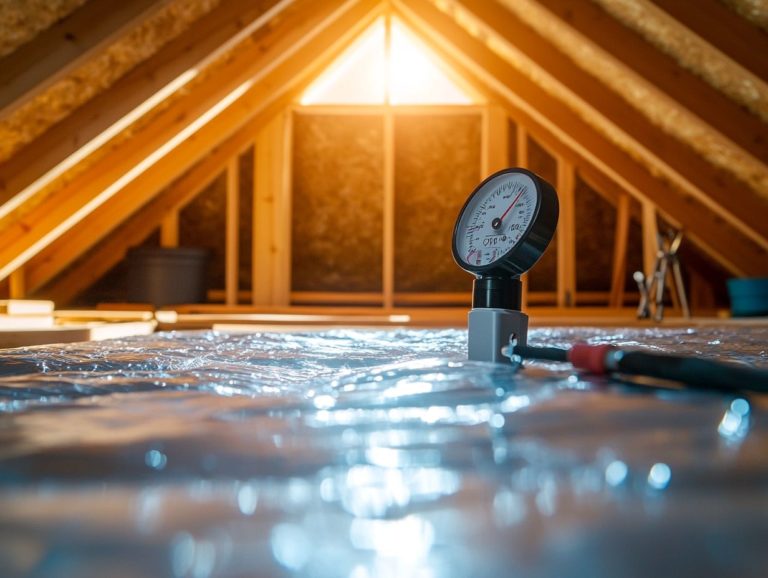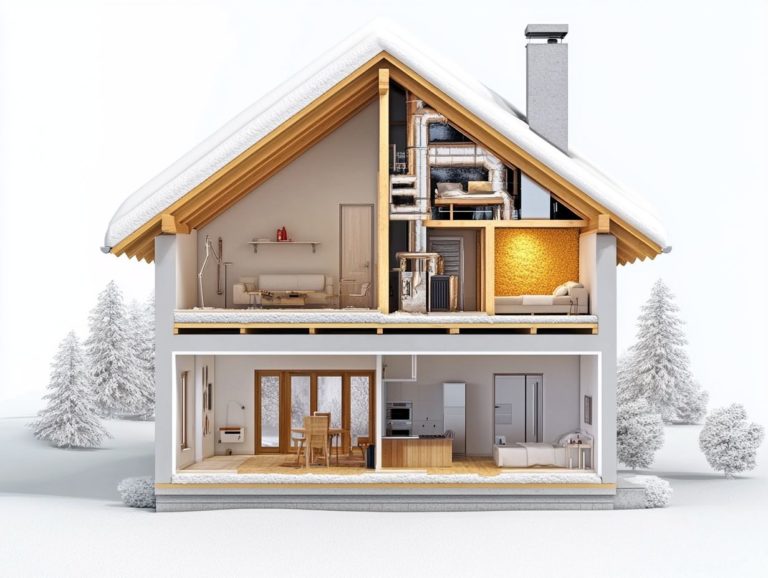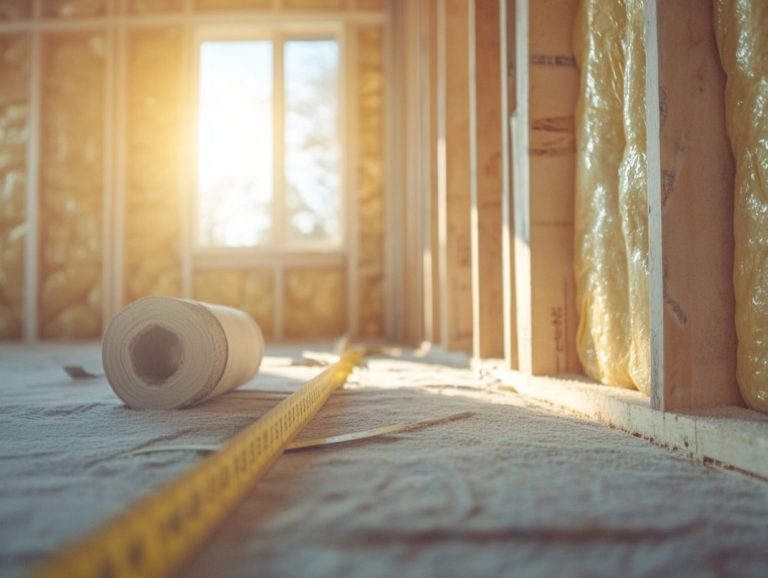5 Best Insulation Materials for Energy Savings
Choosing the right insulation material can profoundly affect your home s energy efficiency and comfort. With a myriad of options at your fingertips, it s easy to feel overwhelmed when trying to pinpoint which type aligns best with your specific needs.
This article delves into five of the most effective insulation materials: fiberglass, cellulose, spray foam, mineral wool, and reflective barriers. It also clarifies what insulation is and explains its crucial role in energy savings. Additionally, it outlines key factors you should consider when making your choice.
It also highlights common installation mistakes to avoid, empowering you to make informed decisions for your home.
Contents
- Key Takeaways:
- 1. Fiberglass Insulation
- 2. Cellulose Insulation
- 3. Spray Foam Insulation
- 4. Mineral Wool Insulation
- 5. Reflective/Radiant Barrier Insulation
- What Is Insulation and Why Is It Important for Energy Savings?
- What Are the Key Factors to Consider When Choosing Insulation?
- How Do These Insulation Materials Compare in Terms of Cost and Effectiveness?
- What Are the Pros and Cons of Each Type of Insulation?
- How Can Proper Insulation Help with Energy Efficiency?
- What Are Some Common Mistakes to Avoid When Installing Insulation?
- Frequently Asked Questions
- Q1: What are the 5 best insulation materials for energy savings?
- Q2: How does fiberglass insulation save energy?
- Q3: What are the benefits of using cellulose insulation for energy savings?
- Q4: Can spray foam insulation help with energy savings?
- Q5: What is the R-value and why is it important for energy savings?
- Q6: Are there any rebates or incentives for using these 5 best insulation materials for energy savings?
Key Takeaways:
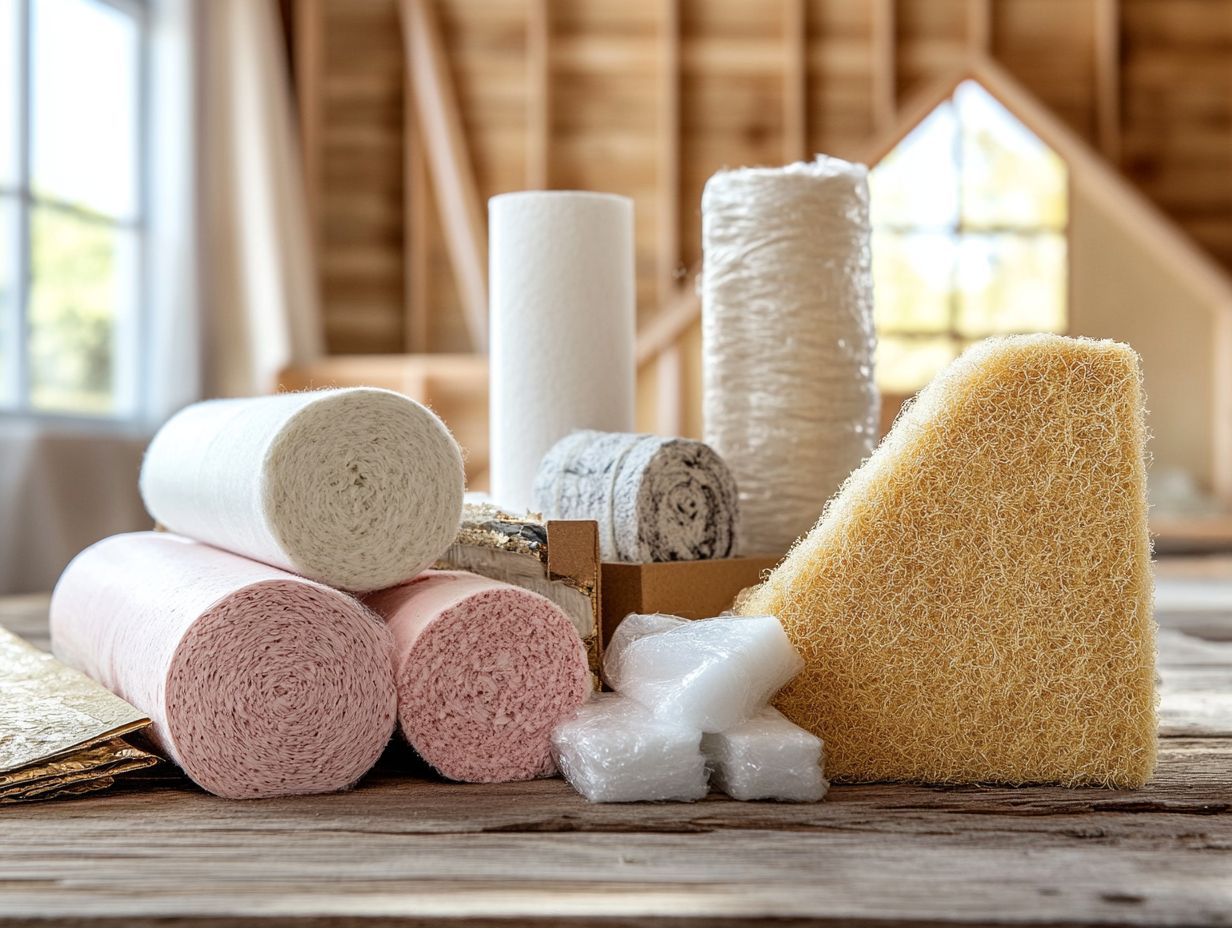
Fiberglass insulation is a cost-effective and widely available option that offers good thermal performance and noise reduction. Cellulose insulation, made from recycled materials, is a sustainable choice that provides excellent thermal and sound insulation. For those looking to enhance their DIY projects, considering 5 insulation hacks for DIY enthusiasts can be beneficial. Spray foam insulation offers the highest R-value, providing superior thermal and air barrier performance, but it can be more expensive.
1. Fiberglass Insulation
Are you a homeowner looking to save energy? Fiberglass insulation stands out as a widely favored option, celebrated for its remarkable heat retention qualities. For more information, check out the best insulation practices for homeowners. This material could be your go-to choice for both residential and commercial applications.
This versatile insulation boasts a high R-value, which is a measure of its ability to keep heat out. Simply put, the higher the R-value, the better the thermal performance you can expect.
The installation process is refreshingly straightforward, giving DIY enthusiasts the power to confidently tackle insulation projects in attics and walls. Durability is another hallmark of fiberglass insulation. It resists moisture and decay over time, offering a lifespan that surpasses that of alternatives like cellulose or foam.
Plus, it shines in fire resistance, helping to slow the spread of flames should a fire occur. While there are some environmental concerns surrounding the manufacturing processes, it s worth noting that fiberglass is often crafted from recycled materials, which helps to alleviate its overall environmental impact.
2. Cellulose Insulation
Cellulose insulation presents an eco-friendly choice crafted from recycled paper products. It delivers impressive thermal performance and moisture control, making it particularly effective for maintaining energy efficiency in your home.
Beyond its sustainable sourcing, cellulose insulation features a high R-value, offering excellent resistance to heat flow. This can translate to significant energy savings over time.
It also excels in sound insulation, creating a quieter indoor atmosphere especially advantageous in bustling urban environments or multi-family residences. The installation process typically involves blowing the cellulose into wall cavities or attics, allowing for a snug fit that reduces air gaps.
However, it’s important to keep in mind that if not installed properly, cellulose can absorb moisture. It may be more susceptible to pests compared to fiberglass and mineral wool alternatives, which tend to be more resistant.
3. Spray Foam Insulation
Spray foam insulation, especially polyurethane foam, stands out as a remarkably versatile insulation material. It delivers exceptional thermal insulation and air sealing capabilities, making it a smart investment for enhancing energy efficiency in both residential and commercial properties.
With an impressive R-value typically ranging from 6 to 7 per inch, spray foam effectively curtails heat loss, ensuring your indoor spaces remain comfortable throughout the year.
The installation is quite straightforward; trained professionals can expertly apply the foam directly to surfaces. It expands and fills any gaps, creating a seamless barrier against air infiltration.
Unlike traditional insulation options such as fiberglass, mineral wool, and cellulose, which can degrade or settle over time, spray foam retains its performance and durability.
This insulation is incredibly adaptable and suitable for a variety of applications, including walls, attics, and crawl spaces. Make the switch to spray foam today for a more energy-efficient home!
4. Mineral Wool Insulation
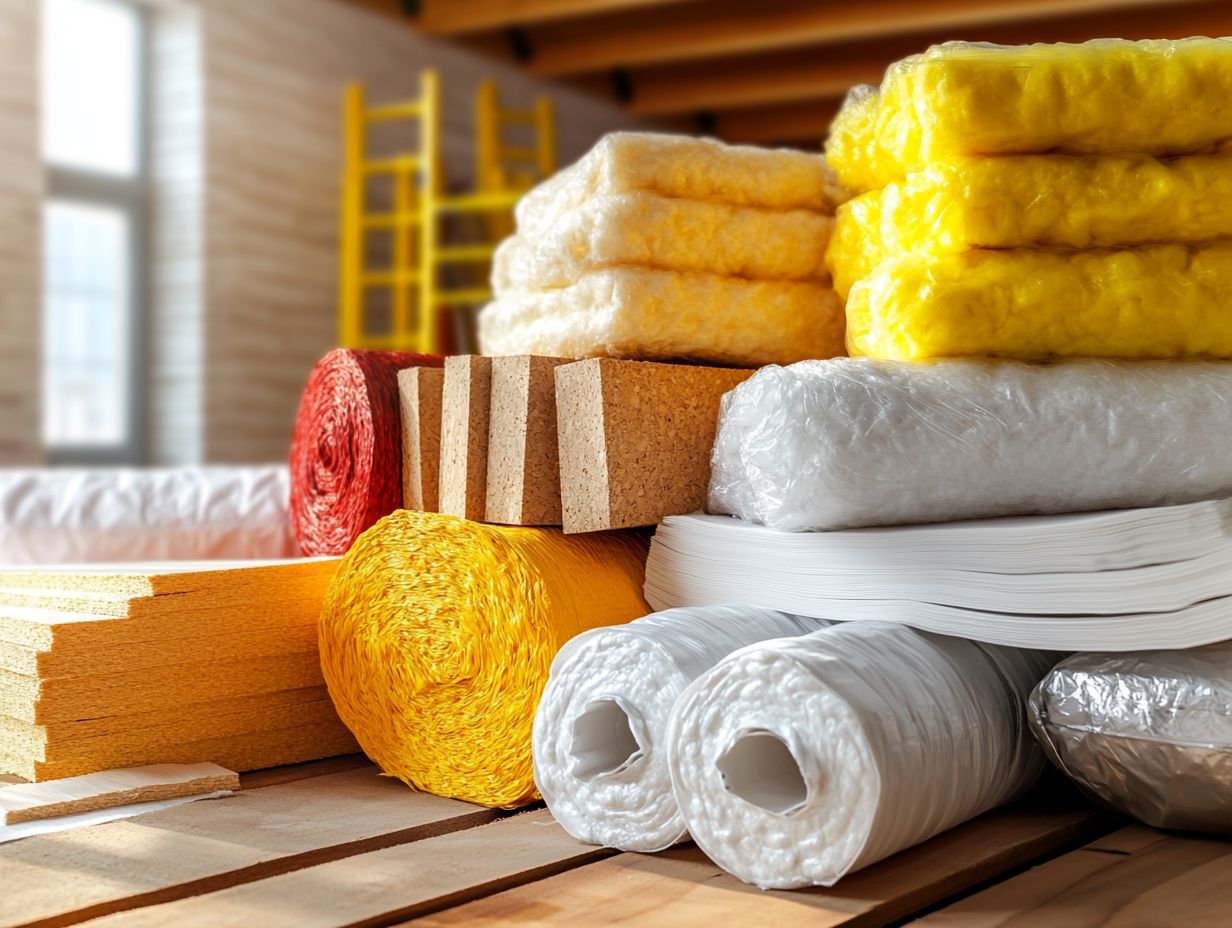
Mineral wool insulation is a fantastic choice for effective thermal insulation in both residential and commercial settings. It offers remarkable fire resistance and sound insulation properties.
It not only has an impressive R-value, which measures how well it keeps heat in or out, but also excels in moisture control. This feature helps prevent mold growth and improves the quality of indoor air.
Unlike fiberglass, which can sag over time, mineral wool maintains its integrity for long-lasting performance. In comparison to cellulose, which is often treated for pest resistance and made from recycled materials, mineral wool stands out with superior water resistance and easier installation.
While spray foam insulation provides excellent air sealing, it usually requires professional installation. This makes mineral wool a more accessible option for DIY enthusiasts eager to enhance their property s energy efficiency.
5. Reflective/Radiant Barrier Insulation
Reflective or radiant barrier insulation is the ideal solution for reducing heat loss and enhancing energy efficiency, especially in warmer climates. By reflecting radiant heat away from your living space, it boosts comfort levels in your home.
This insulation uses a highly reflective surface, often made from aluminum foil, to redirect thermal radiation back toward its source, significantly reducing heat absorption. You’ll notice its benefits most in attics, where it helps keep indoor temperatures cooler during hot months.
Compared to traditional insulation materials like fiberglass and spray foam, reflective barriers offer distinct advantages in specific situations, particularly in areas where cooling costs are high.
Though initial installation costs can vary, the long-term savings on energy expenses can quickly offset those upfront investments. For energy-conscious homeowners, reflective insulation is a must-have for saving money!
What Is Insulation and Why Is It Important for Energy Savings?
Insulation consists of various materials designed to minimize heat transfer and improve energy efficiency in buildings. Insulation helps you save money and stay comfortable while addressing environmental concerns.
By using insulation wisely, you can significantly lower your energy bills and contribute to a more sustainable environment. Consider exploring 5 ways to improve home insulation. Common insulation materials include:
- Fiberglass
- Foam board
- Cellulose
- Spray foam
Each material offers unique advantages depending on your specific needs.
For example, fiberglass is popular for its affordability and effectiveness. Spray foam, on the other hand, provides superior air sealing properties. It s also essential to consider the environmental impact of producing and disposing of various materials.
Ultimately, selecting the right insulation creates a comfortable living space that saves you money and supports eco-friendly practices.
What Are the Key Factors to Consider When Choosing Insulation?
When selecting insulation, consider several key factors: type of materials, R-value, installation process, moisture control capabilities, and overall cost-effectiveness.
Each of these elements significantly influences thermal performance and energy efficiency. Understanding them is essential for achieving optimal comfort and saving on energy bills.
Take the R-value, for instance; it measures a material’s resistance to heat flow, with higher values indicating better insulation and improved energy efficiency.
Different insulation types, such as fiberglass, foam, and cellulose, offer unique advantages and challenges that affect both your initial investment and long-term performance.
Effective moisture control is critical in preventing issues like mold and structural damage, enhancing the insulation’s lifespan and overall effectiveness.
By carefully considering these factors, you can make informed decisions that meet your needs and budget, leading to a more comfortable and efficient home.
How Do These Insulation Materials Compare in Terms of Cost and Effectiveness?
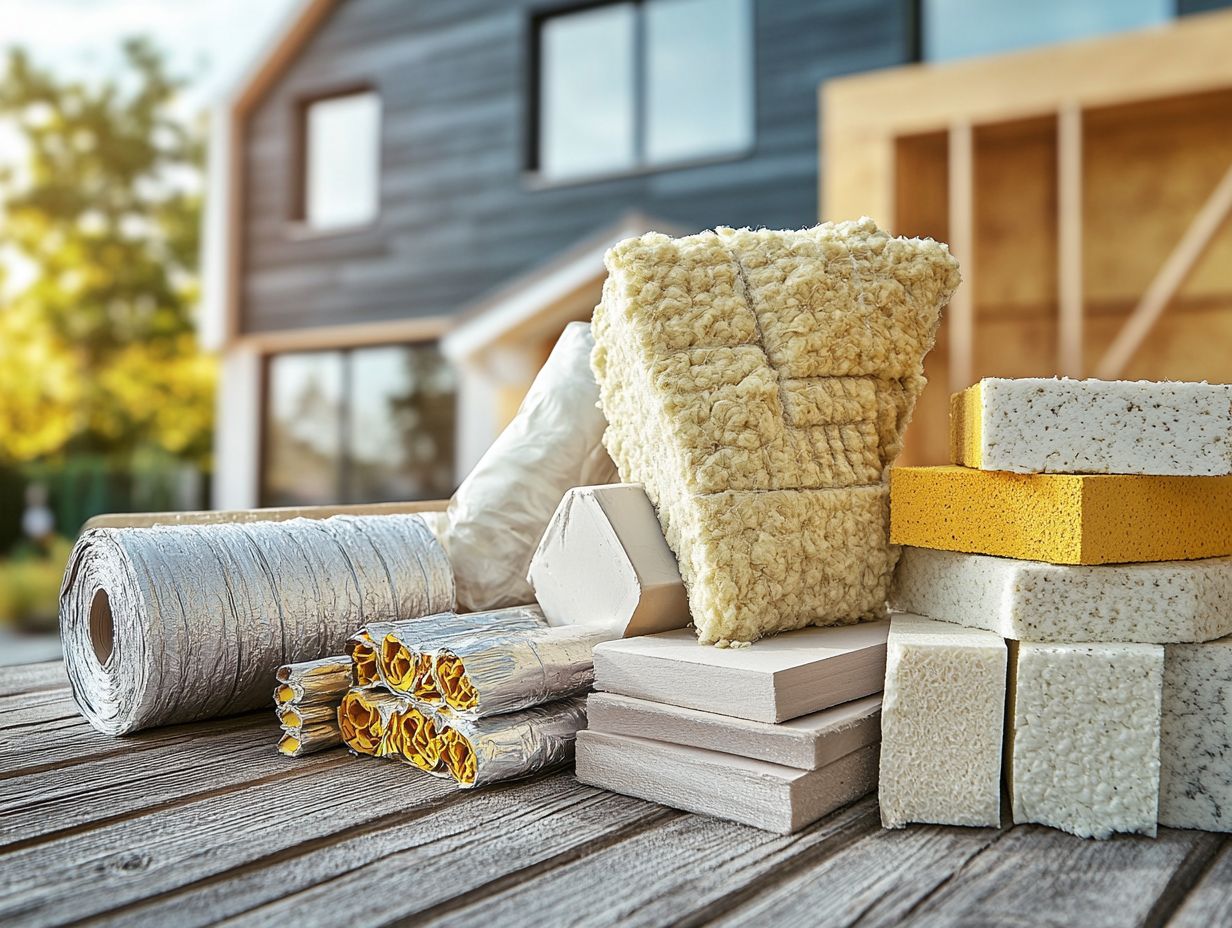
Comparar varios materiales de aislamiento revela diferencias notables tanto en costos como en efectividad. Opciones como fibra de vidrio, celulosa y espuma de spray vienen cada una con sus propias ventajas nicas, as como diferentes niveles de rendimiento del aislamiento y eficiencia energ tica.
Entender estas distinciones es esencial para ti como propietario de vivienda. Esto es especialmente importante cuando se busca optimizar el ahorro energ tico y se tienen en cuenta las limitaciones de presupuesto.
Por ejemplo, la fibra de vidrio generalmente ofrece un costo inicial m s bajo pero tiene un R-value moderado, que mide su resistencia t rmica. Por otro lado, la celulosa es celebrada por su eco-amigable naturaleza y ofrece un R-value digno de menci n, lo que la convierte en una opci n atractiva a pesar de sus costos de instalaci n ligeramente m s altos.
La espuma de spray se destaca con el R-value m s alto, permitiendo un ahorro energ tico excepcional a lo largo del tiempo, aunque requiere una inversi n inicial m s grande. Al considerar estos factores, puedes tomar decisiones bien informadas que se alineen tanto con tu situaci n financiera como con tus objetivos de confort.
What Are the Pros and Cons of Each Type of Insulation?
Each type of insulation material comes with its unique set of pros and cons, influencing both thermal performance and environmental impact. Understanding how to choose sustainable insulation materials can help you make the best choice for your home!
Choosing the right insulation can significantly affect your energy bills and the overall comfort of your living space.
For example, fiberglass insulation delivers excellent thermal resistance and fire safety. However, installing it can be tricky and may require professional assistance to ensure there are no gaps that undermine its efficiency.
On the flip side, cellulose insulation is eco-friendly and boasts impressive air-sealing properties. However, it may settle over time, potentially lowering its effectiveness.
Spray foam insulation offers superior air barrier characteristics and high R-values. Yet, its price can be a hurdle for many homeowners.
Mineral wool stands out for its fire resistance and sound absorption. However, it can be heavier and pricier than other options. By carefully evaluating these factors, you can make an informed choice that best suits your home and lifestyle.
How Can Proper Insulation Help with Energy Efficiency?
Proper insulation enhances your energy efficiency by minimizing heat loss through walls, ceilings, and floors. This reduces the overall energy consumption needed for heating and cooling systems.
This becomes particularly crucial during extreme weather conditions. A poorly insulated home can lose up to 30% of its heat during winter months.
By effectively sealing off thermal bridges, insulation maintains a comfortable indoor environment while leading to significant savings on your energy bills.
The R-value, a measure of how well insulation resists heat flow, is critical for evaluating insulation effectiveness. The higher the R-value, the greater your potential energy savings.
It s imperative for you to select materials that align with your climate and specific needs to maximize benefits.
What Are Some Common Mistakes to Avoid When Installing Insulation?
When you install insulation, watch out for common mistakes that can compromise its performance. Improper sealing, inadequate moisture control, and overlooking airflow considerations can all lead to reduced effectiveness and higher energy costs.
Addressing these issues is essential for homeowners and builders, as the long-term benefits of insulation rely heavily on effective installation practices. For example, ensuring that all seams and edges are tightly sealed can prevent air leaks that undermine thermal barriers.
Additionally, incorporating vapor barriers where necessary is crucial for managing moisture, helping to prevent mold growth and maintain indoor air quality.
Assessing and regulating airflow through ventilation systems can significantly enhance comfort and energy savings. By following these best practices, you can truly unlock the potential of insulation, creating an environment that is not only energy-efficient but also promotes overall well-being.
Frequently Asked Questions
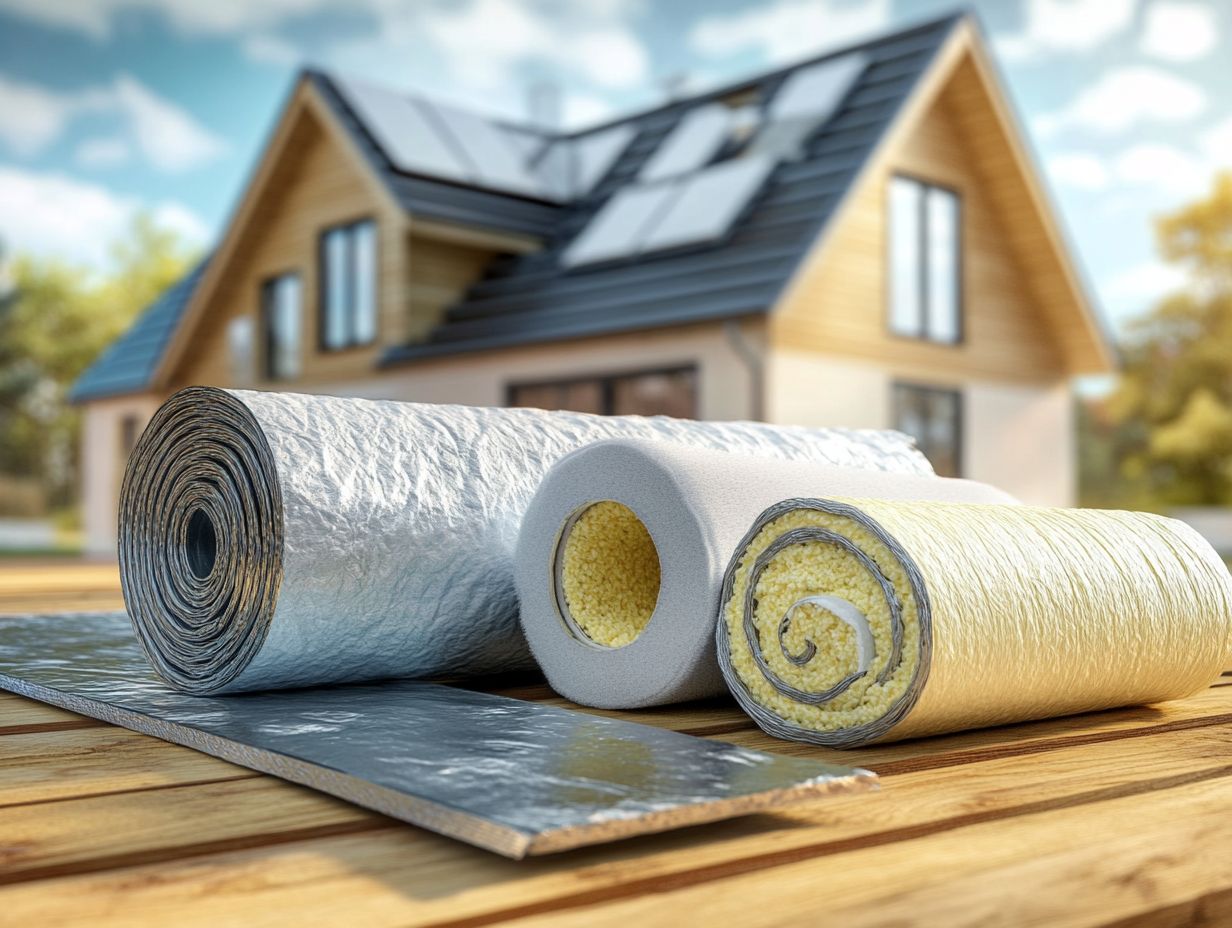
Q1: What are the 5 best insulation materials for energy savings?
The 5 best insulation materials for energy savings are fiberglass, cellulose, spray foam, mineral wool, and rigid foam.
These materials have high insulation properties. They are commonly used for improving energy efficiency in homes and buildings, and understanding the key factors in choosing insulation can help you make informed decisions.
Q2: How does fiberglass insulation save energy?
Fiberglass insulation works by trapping air between its fibers, creating a barrier that prevents heat transfer.
This reduces the energy needed to heat or cool a building.
Q3: What are the benefits of using cellulose insulation for energy savings?
Cellulose insulation is made from recycled paper and is a more environmentally friendly option compared to other materials.
With a high R-value, it provides excellent insulation, leading to significant energy savings.
Q4: Can spray foam insulation help with energy savings?
Yes, spray foam insulation not only provides high insulation but also creates an airtight seal that prevents air leakage.
This significantly reduces the energy required to heat or cool a building.
Q5: What is the R-value and why is it important for energy savings?
The R-value measures how well an insulation material resists heat flow.
A higher R-value means better insulation and more energy savings.
Q6: Are there any rebates or incentives for using these 5 best insulation materials for energy savings?
Don’t miss out! Many governments and utility companies offer rebates and incentives for using energy-efficient insulation materials.
Check with your local government or utility provider for available programs today.


